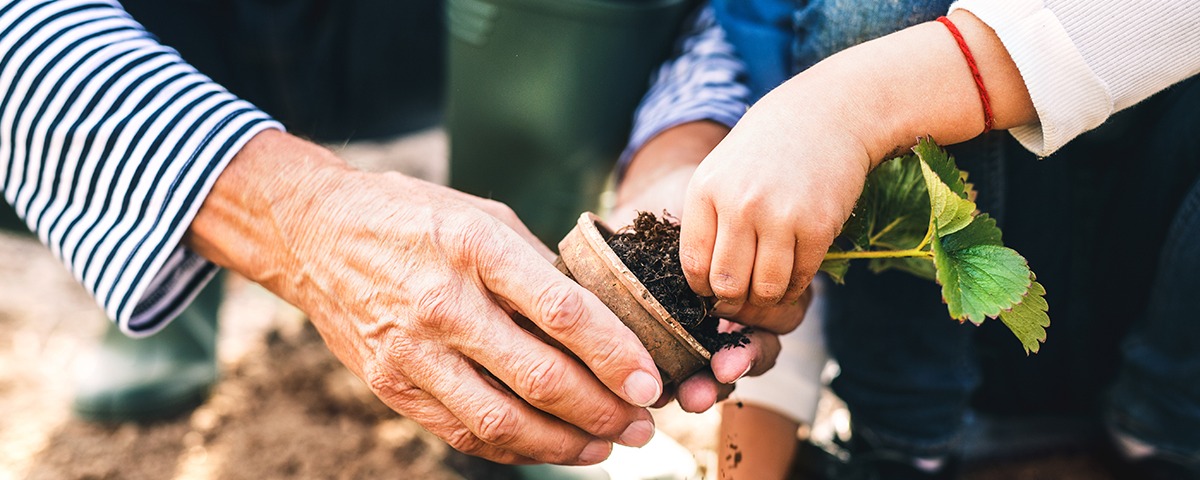
Whether you’re a beginner or an expert gardener, garden allotments bring significant environmental and health benefits. Growing vegetables and fruit can encourage a healthy diet, help you save money and provide habitats for many wildlife species. Explore our garden allotment tips to make your outdoor space thrive, from getting the right soil balance to picking your plants.
Key Takeaways
Grow your produce
• Transform your spacious garden into an allotment
• Growing fruit and vegetables is easier than you might think
Balance the soil and select your plants
• Ensure the right soil balance for healthy plant growth
• Choose plants suitable for your climate and soil type
Plan your allotment
• Map out your green space
• Consider sun exposure, drainage and wind patterns
Rotate your crops
• Rotate crops to maintain soil health
• Pair compatible plants to enhance growth and deter pests
Water and maintain
• Water consistently and avoid overwatering
• Regularly weed, prune, and care for your allotment
What is an allotment?
A garden allotment is a piece of land used for cultivating purposes and is split into different sections to grow various produce.
1. Understand your soil type and sunlight exposure
What works in one home allotment might not work in another. Before planting your favourite fruit and veg, consider your garden aspect (the direction your garden faces) and the soil type.
To understand your garden’s aspects, take a compass or install a compass app on your phone. Point it towards the back of your garden, as this will give you an overall view. If you have a south-facing garden, it’s easier to play around with design ideas and planting.
Understanding your soil type is essential for a successful garden. Soil is usually either acidic if its pH is below 7.0 or alkaline if it's above. You should also consider the soil's texture and consistency, as these factors will determine your plants' nutritional needs and drainage. To find out your soil’s pH, buy a testing kit from a local garden centre or online.
2. Choose fruit and vegetables
Once you’ve figured out your garden’s soil type and aspect, it’s time to choose the fruit and vegetables you want to grow. Perennials are perfect for beginners, as they usually last at least two years and return each spring from their rootstock. These include tomatoes, garlic, basil and strawberries.
Below are some fruits and vegetables you can plant based on your garden’s sunlight exposure:
| Sun | Partial shade | Shade | Dark |
| Tomatoes |
Strawberries |
Lettuce |
Chives |
| Courgettes |
Blackberries |
Spinach |
Mint |
| Oregano |
Blackcurrants |
Kale |
Lemon balm |
| Potatoes |
Radishes |
Peas |
Spinach |
Learn more about growing vegetables in your new build home in our guide.
3. Consider containers and pots
Another brilliant idea for your allotment design is to keep potted vegetables and herbs on your patio. Instead of using canes, let gravity do the work. Hanging baskets are a good place for vine plants to thrive and grow up high. If you have a deep barrel container, you could grow potatoes, too.
4. Keep things separate
Use reclaimed railway sleepers to create raised beds in your home allotment, or consider adding a small fence to keep it separate from the rest of your garden. Growing your fruit and vegetables can be lots of fun for the whole family, and everyone will enjoy eating what you’ve grown.
5. Plan your watering schedule
One of the best garden allotment tips is to have an outside tap or water butt in your garden. This way, you won’t need to go back and forth to fill up your watering can. Remember to water your fruit and vegetables every few days instead of every day.
6. Companion planting
This method helps optimise space and keep pests away. Mutually beneficial plants, which have antibacterial and antifungal properties, will aid pollination and prevent diseases. Some of the benefits of companion planting include:
• Deterring pests
• Attracting beneficial insects, like pollinating bees
• Regulating shade
• Improving plants’ health
• Improving soil fertility
• Suppressing weeds
For example, purslane shades the soil around basil, keeping it fresh during summer. Basil helps tomatoes and peppers grow and adds flavour to meals.
7. Protect your allotment
If you want to keep your garden organic and pest-free, grow herbs and plants that are natural repellents. These include:
• Lavender
• Mint
• Rosemary
• Basil
• Chives
• Lemongrass
• Marigolds
• Petunias
8. Rotate your plants
To get the most out of your garden allotment, divide it into three sections and rotate the crops each year. Add organic matter to boost your soil. Try to only grow what you need; otherwise, you could end up with too much, which could go to waste. For instance, lettuce leaves are best if eaten fresh.
Looking to buy your new home? Explore our energy-efficient developments across the UK. At Barratt Homes, we want you to enjoy your homebuying journey. That's why we have unique offers to help you move, whether you're a first or second-time buyer.
Call or visit our Sales Advisers today to learn more.


